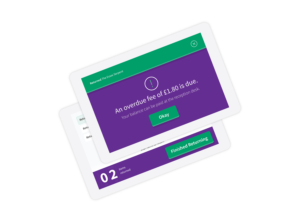Where will PaaS bring the most value to your enterprise?
Elliott King
4 min read • 15 April 2020
Platform as a Service or PaaS is a real game-changer in cloud transformation. PaaS offers fast, frictionless scalability of resources but it also brings a lot more to the table.
PaaS provides a complete and integrated development framework and deployment environment, along with reusable components and architecture patterns, development tools, and other services designed to accelerate and simplify the entire application lifecycle.
By using the wealth of tools, services, and software components prebuilt into the platform, organisations can reduce their software engineering workload and develop new capabilities quickly and cost-effectively. Plus, the PaaS provider manages the underlying infrastructure, freeing in-house teams to focus on innovation, not infrastructure management.
PaaS also provides a platform for rearchitecting existing systems – a key element of many digital transformations. It allows organisations to free themselves from existing architectures that can’t support rapid change and begin to shake off the technical debt of legacy systems. As we’ll show you throughout this guide, PaaS can help solve many of the challenges digital transformation presents, which explains why the global PaaS market is expected to grow at a CAGR of over 22% through to 2023.
We've talked about the benefits of PaaS before, but how do you identify where PaaS will bring the most value to your enterprise? We've highlighted some key areas where a PaaS approach can support rapid digital transformation and share some real-world examples of the organisations leading the way.
Find your ideal PaaS use case
Cloud-native development: more innovation, less effort
Using built-in software components and services massively reduces the workload for creating cloud-native applications. Your teams don’t need to spend valuable time building components that already exist, they can simply create your architecture around your chosen PaaS providers offering.
And by investing some time in learning how to take full advantage of everything these PaaS services have to offer, it becomes much simpler for your teams to handle enterprise-scale, security, and fault tolerance demands.

You can read more about out how serverless technology helped Suffolk Libraries transform their customer experience here.
Success factors
Invest in your team’s capabilities and arm them with the latest DevOps practices so that they can harness the full power of PaaS. Don’t be afraid of vendor lock-in, embrace the platform and its unique capabilities to accelerate your business. Don’t fear experimentation but do monitor and audit your cloud estate regularly to keep control of costs. Make sure your teams have standards for service names and tags. Deploy your architecture and application code automatically, set up separate environments for development, testing and production. Azure Functions can be employed to provide new integration capabilities over existing APIs, enabling flexibility, scale and security across a multi-vendor landscape.
Integration and middleware: build a brighter future for new and existing systems
With modern PaaS tooling, it’s now possible to take complex existing datasets, databases, and legacy systems and create a proxy layer that takes the data and exposes it to the cloud through APIs.
This integration layer allows you to easily peel off legacy systems and swap them out for new systems, or even “PaaSify” existing systems in the background – all without any impact on your frontend.

You can read more about how a PaaS integration layer helped P&O's mobile app connect with port handling, enterprise service bus and booking/ticketing systems here.
Success factors
PaaS includes integration focused components like message service bus, message queue, stream processors and a wealth of database services. Consider the modes of integration that your solution will require, do you need push, pull, subscription, broadcast or some combination? Serverless and PaaS services are used to provide functions with single responsibility, ensuring clear separation of concerns. Such functions are easily isolated, tested and upgraded independently. Selecting the correct key PaaS components for your solution will get you to market faster and allow your teams to concentrate on adding value to your business.
Migration to the cloud: avoid the unnecessary costs of multi-cloud
In our long experience of supporting clients on their cloud journeys, one thing is clear: to realise the full benefits of cloud migration, you need to pick one cloud supplier and go all-in.
A multi-cloud approach might look tempting to avoid vendor lock-in, but it carries a lot of cost and restricts your ability to leverage the full benefits of the platform. Multiple clouds require multiple sets of staff to manage and maintain them, ramping up management complexity and expense. There’s also the loss of opportunity of being able to take advantage of innovations across your multi-cloud environment because they’re native to one platform.
If you’re going all-in on a single identity provider to connect users to cloud resources, it makes sense to go all-in on everything else, too. If you want velocity, scale, and innovation after your migration away from the on-premises world, it’s essential to pick a single PaaS cloud provider and develop for that platform.

You can read more about how we migrated a leading travel brand to the cloud helping them to enter two new markets and reduce page loads times by 50% here.
Success factors
Get your sizing and scaling right, keeping your operational performance requirements in mind. Experiment early and rapidly to find the right combination of services for your migration. Keep security front of mind. You may choose to mix IaaS with PaaS, allowing you to keep your existing processes in place for core development while extending the system in new ways using PaaS.
In time your team will expand their knowledge until they are in a position to migrate from IaaS to PaaS. Combine IaaS services like virtual machines and containers with PaaS services like SQL Server and application gateways to enhance your IT environment, leaving open the potential for future migration to other PaaS services to further improve business efficiency.
Summary
Enterprises across the world are waking up to the fact that adding PaaS to their development armoury can give them a critical edge over their competitors by supporting faster, more cost-effective innovation and transformation.
Want to understand how PaaS could accelerate your transformation? Book a cloud discovery workshop now! Our expert team of Azure accredited cloud experts will help you build a customised roadmap to deliver your cloud transformation.
Elliott King


